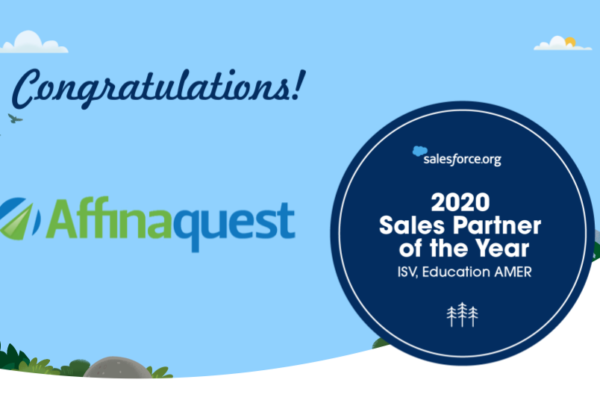Written by Lori Stirling, SVP of Advancement Strategy at Affinaquest, in collaboration with Terry Callaghan, Senior Director of Management Consulting at Zuri Group
In our last post we discussed the growing interest in social impact on college rankings and cause-based philanthropy. Two additional recent trends should be considered in the changing landscape of philanthropy: student engagement and the current inflationary climate.
While college ratings that focused on alumni participation have changed, donor acquisition and retention remain a vital aspect of building a pipeline and giving experience, it should be approached strategically. One way to do this is to focus on creating a culture of philanthropy during students’ academic years, while they are still on campus and “close” to the institution. Meeting the students “where they are at” is important. This can be accomplished in two ways, first, as mentioned in our last post, by focusing on positive social outcomes. Secondly, by providing easy, attractive vehicles for giving.

According to The Annie E. Casey Foundation (www.aecf.org), the seven social issues that matter to Gen Z are: Health Care (affordability and availability), Mental Health, Higher Education (cost), Economic Security, Civic Engagement (gun control, education access to women world-wide), Racial Equity and the Environment.
Forbes mentions that Gen Z’s (and Millennials) are increasingly driving their employment and consumer choice based on the social impact of organizations, determining where they will work, shop and spend their dollars based on social and political values.
Forty-four percent of millennials and 49% of Gen Zs surveyed said that, over the past two years, they have made choices about the types of work they would do—and the organizations they’d be willing to work for—based on their personal values. And as consumers, they often stop or initiate relationships based on how companies treat the environment, protect personal data and position themselves on social and political issues. This year, almost a third of respondents started or deepened consumer relationships with companies based on their response to the COVID-19 crisis, while around a quarter stopped or lessened relationships for the same reason.
Organizations that are not aligned with millennial and Gen-Z values risk losing favor with this large and increasingly influential cohort…..Driving societal change is not just the right thing for leaders to do, but it’s also good for business.
It follows reason, that if consumer dollars are directed based on social impact, this also applies to philanthropic dollars, perhaps to an even greater extent. Engaging students in the positive outcomes that result from research, social equity and justice initiatives on campus will serve not only to improve their experience, but to increase awareness and engagement that will continue after graduation. Many institutions are accomplishing this through service initiatives, research fellowships and campus events/lectures.
The use of technology is a second factor in building student (and recent graduate) philanthropy.
Platforms such as text-to-give and enhanced online giving functionality such as e-wallets have provide easy and seamless ways to give which increase conversion rates and giving participation in this cohort.
In addition, allowing students to lead peer-based fundraising initiatives for programs that excite them increases awareness and eagerness for giving. For example, raising funds for a social justice event or for a student environmental organization demonstrates the impact of philanthropy on important initiatives for both the students and the institution. Most importantly, it is focused on outcomes and results.
Yet, for many institutions, the student programs are in their infancy and still growing. Implementing a new position dedicated to student philanthropy; organizing a student philanthropy council and investing in some of the technologies mentioned above are ways to sure-up a strategic effort for long-term engagement, donor acquisition and retention upon graduation.
The second factor to consider is inflation. This poses a challenge for donor fundraising efforts, as it impacts the disposable income of individual donors and their future economic expectations. According to the Giving USA 2023 Annual Report, across all causes (education, religion, healthcare, etc.), donations by individuals dropped 6.4% or 13.4% in 2022 when adjusted for inflation. Fortunately, giving by Corporations and Foundations rose 6% and 2.5%, respectively, partially making up for this shortfall. Overall, giving to education dropped 3.6% or 10.7% when adjusted for inflation. One point is clear, that even when donations increase, they are not making up for the impacts of inflation. A $10,000 gift from a donor still remains a $10,000 gift, and is typically not increased to adjust for inflation. Total giving must actually increase to remain constant in real dollars.
So the challenge to increase giving levels is even more important in an inflationary climate. There are several approaches to address this. First, the institution can demonstrate the consequences of inflation on the spending power of the institution. Rising costs in terms of everyday expenses, and budget cuts experienced especially by public institutions. Even more compelling is the impact of inflation that is felt by fixed-income students. Demonstrating the need to provide increased student support is a relatable call to action for many donors.
Second, realize that some economic sectors actually benefit from inflationary increases. Strategically seeking out increased giving levels and/or new donors (individual and corporate) in the technology, energy and real estate industries can reap positive results for the institution that offset inflationary losses.
The emergence of cause-based giving along with recent inflationary measures bring new challenges to philanthropy. In the short term, institutions may need to quickly adjust their fundraising approaches and tactics to align with the new trends. They must also plan for longer-term strategies for a sustainable culture of philanthropy through donor engagement. By focusing on engagement, personalized stewardship, and fostering a culture of philanthropy, institutions can build a strong pipeline for sustained annual giving and major gifts, ensuring the longevity of their advancement programs and continued success in fulfilling their mission and meeting social needs.




